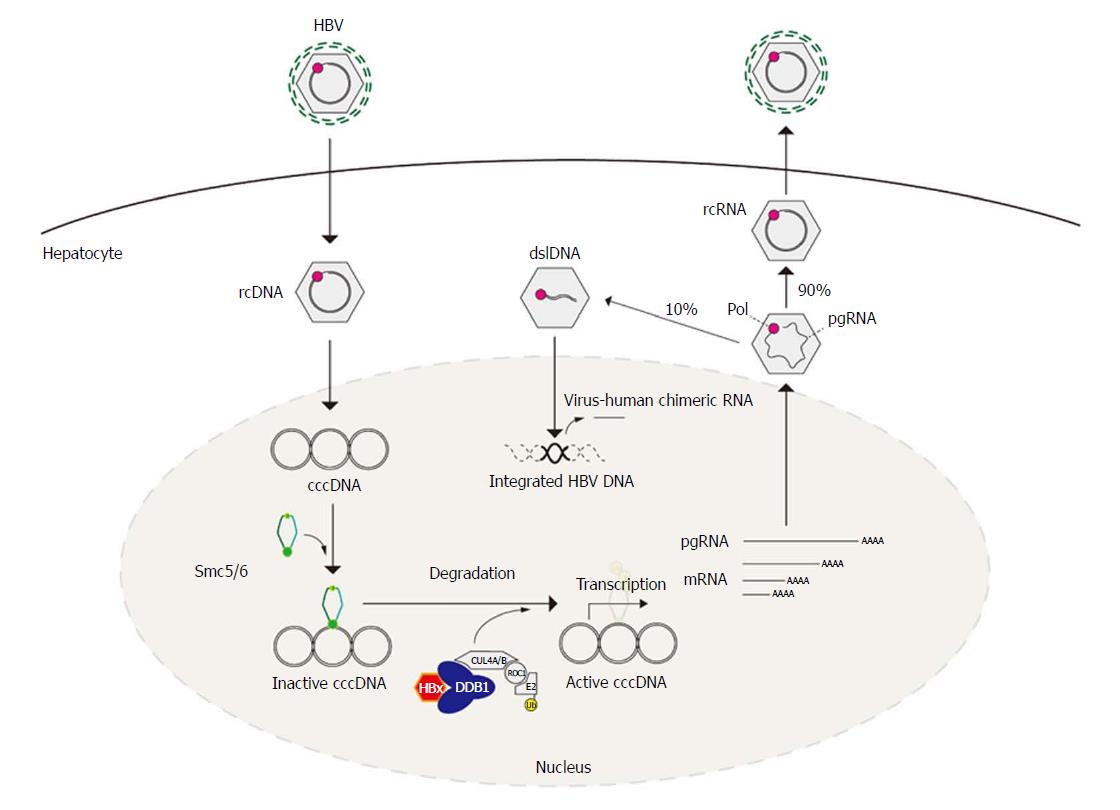Copyright
©The Author(s) 2018.
World J Gastroenterol. Jun 7, 2018; 24(21): 2261-2268
Published online Jun 7, 2018. doi: 10.3748/wjg.v24.i21.2261
Published online Jun 7, 2018. doi: 10.3748/wjg.v24.i21.2261
Figure 2 The life cycle of the hepatitis B virus.
Hepatitis B virus (HBV) virions infect hepatocytes, and then rcDNA enters the nucleus and is converted to covalently closed circular DNA (cccDNA). Structural maintenance of chromosomes 5 and 6 (Smc5/6) can silence cccDNA, but HBV regulatory protein X (HBx) hijacks the Cullin 4-ROC1 RING E3 ubiquitin ligase (CRL4) complexes by binding to damage-specific DNA-binding protein 1 (DDB1) to target Smc5/6 for ubiquitination. Smc5/6 is consequently degraded by the proteasome, and cccDNA can then be transcribed. Transcribed HBV pregenomic RNA (pgRNA) is co-packaged with reverse transcriptase in capsids and is normally (~90%) reverse-transcribed into rcDNA, while double stranded linear DNA (dslDNA) is rarely (10%) synthesized depending on the binding region of the RNA primer. dslDNA can be integrated into the host cell genome, and virus-human chimeric RNA can be transcribed from integrated HBV DNA. After reverse transcription, the mature nucleocapsids can either be secreted as virions or cycle to the nucleus to add to the cccDNA pool.
- Citation: Sekiba K, Otsuka M, Ohno M, Yamagami M, Kishikawa T, Suzuki T, Ishibashi R, Seimiya T, Tanaka E, Koike K. Hepatitis B virus pathogenesis: Fresh insights into hepatitis B virus RNA. World J Gastroenterol 2018; 24(21): 2261-2268
- URL: https://www.wjgnet.com/1007-9327/full/v24/i21/2261.htm
- DOI: https://dx.doi.org/10.3748/wjg.v24.i21.2261









